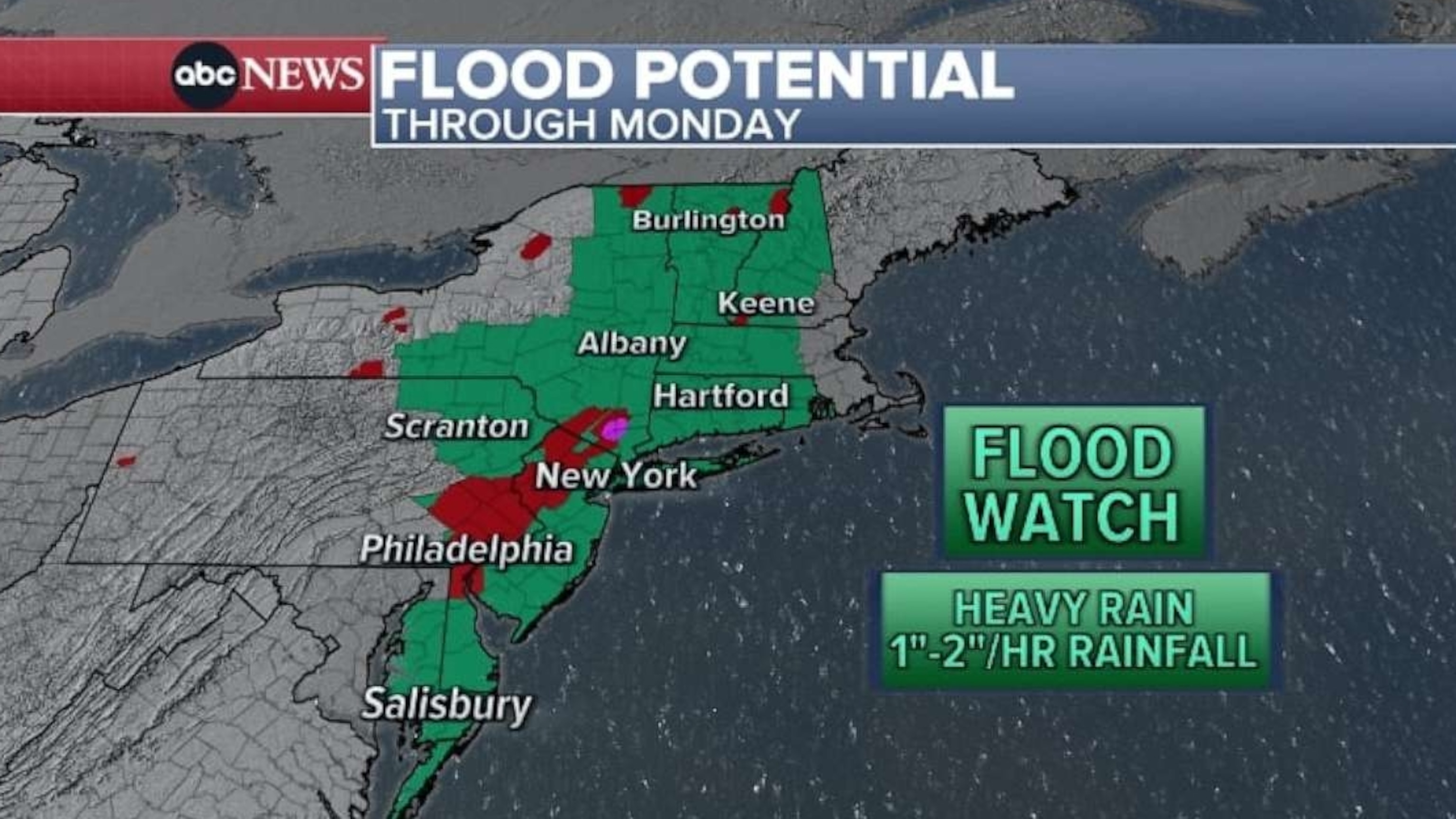Flash Flood Emergency: What To Know And How To Respond

Table of Contents
Recognizing the Signs of a Flash Flood Emergency
Learning to identify the early warning signs of a flash flood is paramount. While official flash flood warnings from your national weather service are crucial, observing changes in your local environment can also provide vital clues. Rapidly rising water levels are a significant indicator. Don't underestimate the power of seemingly small waterways; they can quickly become raging rivers during a flash flood.
- Pay close attention to weather forecasts and alerts: Your local news and national weather service are your primary sources for flash flood warnings and watches. A flood watch indicates conditions are favorable for flash flooding, while a flash flood warning means flooding is occurring or is imminent. Act immediately upon receiving a warning.
- Look for rapidly rising water levels in streams, rivers, and normally dry areas: Even a slight increase in water levels in areas that usually remain dry should raise concerns. Observe the speed of the water rise; rapid increases are a major red flag.
- Notice the sound of rushing water approaching: The roar of approaching floodwaters is a clear and immediate danger signal. If you hear this sound, seek higher ground immediately.
- Observe sudden increases in water flow, even in seemingly small waterways: Creeks and drainage ditches that are typically calm can become raging torrents during a flash flood. Don't underestimate their power.
- Be aware of overflowing storm drains and ditches: Overwhelmed drainage systems indicate a high volume of water and an increased risk of flash flooding in your area.
Preparing for a Flash Flood Emergency: Pre-Flood Actions
Proactive steps before a flash flood emergency significantly reduces its impact. This involves creating an emergency plan and preparing your home and family. Knowing what to do before a flood occurs is as important as knowing what to do during one.
- Develop a family evacuation plan, including designated meeting points: Know your evacuation routes and have multiple meeting points in mind, both nearby and further away, in case you become separated. Practice your plan regularly, especially with children.
- Prepare a flash flood emergency kit with essential supplies: This kit should include water (one gallon per person per day for several days), non-perishable food, a first-aid kit, medications, flashlights, batteries, a portable radio, and important documents in waterproof bags.
- Identify safe high-ground locations in your area for potential evacuation: Know where you will go if you need to evacuate quickly. This could be a friend's house on higher ground, a designated community shelter, or another safe location.
- Consider flood insurance to protect your property: Flood insurance is often not included in standard homeowner's insurance policies. Check your coverage and consider purchasing a separate policy if necessary.
- Elevate valuable items in your home: Move important documents, electronics, and other valuable items to upper floors or higher shelves to protect them from potential flood damage.
Creating a Family Communication Plan
Effective communication is critical during and after a flash flood emergency. Having a reliable way to contact family members is crucial, especially if you are separated during an evacuation.
- Designate an out-of-area contact person: Choose someone outside of the affected area who can serve as a central point of contact for all family members. This person can relay information and help coordinate reunification efforts.
- Ensure everyone in the family has access to multiple communication methods: Cell phones, landlines, and even a pre-arranged meeting place can all be important in case one communication method fails.
Responding to a Flash Flood Emergency: During & After
When a flash flood warning is issued or a flood is imminent, immediate action is vital. Your priority is to ensure your safety and the safety of your family. Remember that flood waters can be extremely dangerous.
- Immediately move to higher ground: Never attempt to drive or walk through flood waters. The depth and speed of the water can be deceptive, and even a few inches of rapidly flowing water can sweep you off your feet.
- If trapped, move to the highest possible point and call for help: If you become trapped, find the highest point you can reach and call emergency services immediately. Stay put until help arrives.
- Stay informed about the flood situation through official channels: Continue to monitor weather reports and official updates for information on the evolving flood situation and any changes to evacuation orders.
- Avoid floodwaters after the flood, as they may be contaminated: Floodwaters can be contaminated with sewage, chemicals, and debris, posing significant health risks. Avoid contact whenever possible.
- Report any damage to authorities: After the floodwaters recede, report any damage to your property or infrastructure to the appropriate authorities.
Conclusion
Flash floods are dangerous and unpredictable events. Being prepared is key to surviving a flash flood emergency. By understanding the warning signs, having a plan, and knowing how to respond, you can significantly reduce your risk and protect yourself and your family. A proactive approach to flash flood safety is the best defense.
Don't wait for a flash flood emergency to strike. Take action today to learn more about flash flood safety and develop a comprehensive preparedness plan for you and your family. Research local flash flood risk areas and understand your local emergency response procedures. Being prepared can save lives during a flash flood emergency and mitigate the devastating impact of rapid flooding.

Featured Posts
-
 New Ferrari Hot Wheels Sets A Mamma Mia Moment For Collectors
May 25, 2025
New Ferrari Hot Wheels Sets A Mamma Mia Moment For Collectors
May 25, 2025 -
 Ecb Faiz Indirimi Sonrasi Avrupa Borsalarinda Gelismeler
May 25, 2025
Ecb Faiz Indirimi Sonrasi Avrupa Borsalarinda Gelismeler
May 25, 2025 -
 The Claire Williams George Russell Situation A Critical Analysis
May 25, 2025
The Claire Williams George Russell Situation A Critical Analysis
May 25, 2025 -
 Kynning A Fyrstu 100 Rafmagnsutgafu Porsche Macan
May 25, 2025
Kynning A Fyrstu 100 Rafmagnsutgafu Porsche Macan
May 25, 2025 -
 Amundi Dow Jones Industrial Average Ucits Etf Daily Nav Updates And Analysis
May 25, 2025
Amundi Dow Jones Industrial Average Ucits Etf Daily Nav Updates And Analysis
May 25, 2025
Latest Posts
-
 Melanie Thierry Une Carriere Au Cinema Et A La Television
May 25, 2025
Melanie Thierry Une Carriere Au Cinema Et A La Television
May 25, 2025 -
 Melanie Thierry Biographie Et Filmographie De L Actrice Francaise
May 25, 2025
Melanie Thierry Biographie Et Filmographie De L Actrice Francaise
May 25, 2025 -
 Le Clash Ardisson Baffie Une Reponse Memorable
May 25, 2025
Le Clash Ardisson Baffie Une Reponse Memorable
May 25, 2025 -
 Thierry Ardisson Et Laurent Baffie Une Dispute Virulente Autour De L Expression Cracher Dans La Soupe
May 25, 2025
Thierry Ardisson Et Laurent Baffie Une Dispute Virulente Autour De L Expression Cracher Dans La Soupe
May 25, 2025 -
 Essaie De Parler Pour Toi La Reponse Cash D Ardisson A Baffie
May 25, 2025
Essaie De Parler Pour Toi La Reponse Cash D Ardisson A Baffie
May 25, 2025
